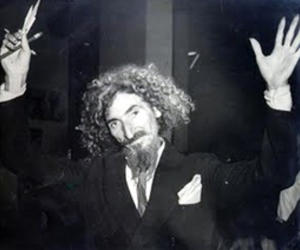The legend of the Gentleman of Paris in Havana
- Submitted by: manso
- Travel and Tourism
- 10 / 07 / 2011

2011.10.06. radiorebelde.icrt.cu.Havana, Cuba.The Gentleman of Paris is not a character of the stale French aristocracy, but a dreamer of long white beard, with black suit and cloak. He used to wander the streets of Havana, weaving dreams and telling stories for those that had the patience and wisdom to listen. Jose Maria Lopez was his real name and he arrived at the Cuban capital when he was 12 years old. His hometown was the village of Vilaseca, in the Spanish province of Lugo. Like many other migrants, young Jose Maria was looking for a chance to make fortune and began to work in different jobs.
He worked as a tailor, florist and bookseller. He also worked in the restaurants of important hotels, like “Inglaterra”, “Sevilla” and “Telegrafo.”
Nobody knows the true cause that made this singular character lose his mind, but many ascribe it to unjust imprisonment. There are many accounts of his incarceration and some are associated to robbery and jealousy. A few even mention a fight where “The Gentleman” accidentally killed his opponent and received a blow in the head that caused his insanity.
Look who is coming, the gentleman from Paris! Others believe that the cause of his derangement was linked to the alleged loss of an hypothetical wife and children that perished in a shipwreck. They also put it down to the disappearance of a girlfriend. She was supposed to come from Paris and meet him, but her ship never reached port because it vanished in very deep waters.
These last versions are opposed to other stories about a girlfriend that died in “The Gentleman's” arms, to whom he swore perpetual fidelity.
The truth is that this man became a customary and beloved character of Havana streets for more than 4 decades. Women loved him for his kindness and gallantry and men sought him for his refined speech. Children, after the initial shock that his looks caused, adored his fantastic stories and the colorful treasures that emerged from his bulging briefcase.
He was amiable and respectful. His dignity surpassed his medium size and emaciated body. He did not accept alms and whenever he approved "some help", he rewarded it with pens or cards of his own making.
Look who is coming, the gentleman from Paris! The years went by and by 1977; his body was already wearing out. The doctors of Havana Psychiatric Hospital managed to convince him of the need to commit him and “The Gentleman” finally accepted. To please him, they trimmed his hair and beard, without razing it and he was given a black suit as befitted "his noble ancestry." At the hospital, “The Gentleman” lived quietly and was properly looked after until his death on July 11 1985.
This picturesque character will live forever in the memory of all those that met him once. He inspired songs, paintings, books and sculptures. Even now, we cheerfully stare at the corner of 23 av. and 12 St. or down 5th avenue whenever somebody hums Antonio Maria Romeu’s danzon "Look who is coming, the Gentleman from Paris!" By: Elsa Maria Cortés and Translated by: Pedro A. Fanego Sea.
Comments